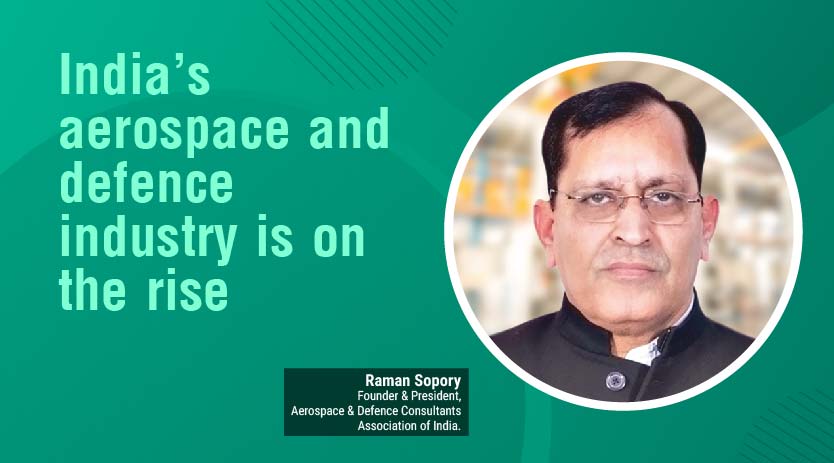Increasing exports of Indian manufacturing with PLI scheme
April 2, 2021 8:53 am
Anil Kumar, Director, Inovance Technology India, in an interview with OEM Update, talks about the benefits expected through government’s push for increasing domestic and localised manufacturing with PLI scheme.
Impacts of Union Budget 2021-22 on machine tools sector.
One of the main objectives of the 2021-22 union budget is to promote domestic Indian manufacturing, and to help Indian manufacturing companies enter global value chain in order to increase their exports. Improved infrastructure is a mandate if the Indian Government is to achieve its dream and see India becoming a $5 trillion economy. From the perspective of the Indian machine tools sector, I think this budget shows that the Indian government is standing right behind every sector across the industries, including machine tools.
With the government’s focus towards localised manufacturing what kind of opportunities do you foresee for the machine tools sector?
Machine tools are used across the manufacturing sector. So, if the government’s new focus on manufacturing boosts domestic manufacturing, then it will certainly increase the size of customer base of Indian machine tool manufacturers. As a sector, machine tools have been severely affected by the pandemic – not least because they are heavily dependent on automotive customers which have taken a major downturn themselves, but the machine tool market is picking up again fast.
What are the potential challenges and impacts of the PLI scheme for the automation and machine tools sector?
I think the PLI scheme definitely has the potential to increase domestic manufacturing in India, and, since it covers plant and machinery for manufacturing in its target sectors, the scheme will surely encourage domestic manufacturing of machine tools to some degree. It should, therefore, also incentivise Indian companies to invest more in automation equipment generally.
I particularly like one thing about the announcement is, that the scheme invites foreign companies to set up units in India. It’s hard for me to say what the challenges of this scheme are, but I do think it’s important that it is communicated to the world in the right way. And in my view, the right way to present this scheme is that India wants to build up domestic Indian manufacturing in order that it can compete and export globally.
How is your business moving towards industry 5.0?
Well Industry 5.0 is very much a marketing buzz word in some regards! But my understanding is that it is focused on the cooperation between man and machine, and finding the best possible way to include humans in the loop when it comes to automation. The really obvious example of this is perhaps cobots, but it goes well beyond this. It’s about ensuring all industrial automation products – from AC Drives to PLCs to HMIs to industrial robots – are safe and easy to use. And that people can interact with them intelligently, for example to ensure that they can easily download and analyse data that will help them improve production efficiency. Ensuring that people can interact with and use our automation products safely and efficiently is one of our core goals here at Inovance during product development. We always have and always will see people as absolutely central to any factory – no matter what level of automation is employed.
Because it is true that India has lower labour costs, I think that Indian factories will always have larger numbers of workers than western factories. For India therefore, Industry 5.0 – and ensuring people can safely work alongside automation technology – may be more relevant than it is in other countries.
With the initiatives like Vocal for Local, how do you foresee the future of Indian machine tools in the global manufacturing sector?
I would like to think the Vocal for Local scheme isn’t about ‘locking out foreign business’ but is about shedding light on the importance of helping Indian companies to sell internationally. I hope it will help grow Indian machine tool exports. Here at Inovance, we sell to and talk to Indian machine tool companies every day and, certainly, I believe the Indian machine tools sector is strong. And it’s also a sector should realistically be able to become a strong exporter. Both because India has some of the strongest engineering and technical skills in the world, and exporting machine tools is in some ways a much easier prospect than exporting mass manufactured products because international freight costs – in relation to the total cost of a machine tool – are relatively small.
“Looking at government’s push, it seems India wants to build up domestic Indian manufacturing in order that it can compete and export globally.”
Cookie Consent
We use cookies to personalize your experience. By continuing to visit this website you agree to our Terms & Conditions, Privacy Policy and Cookie Policy.




















 English
English Hindi
Hindi